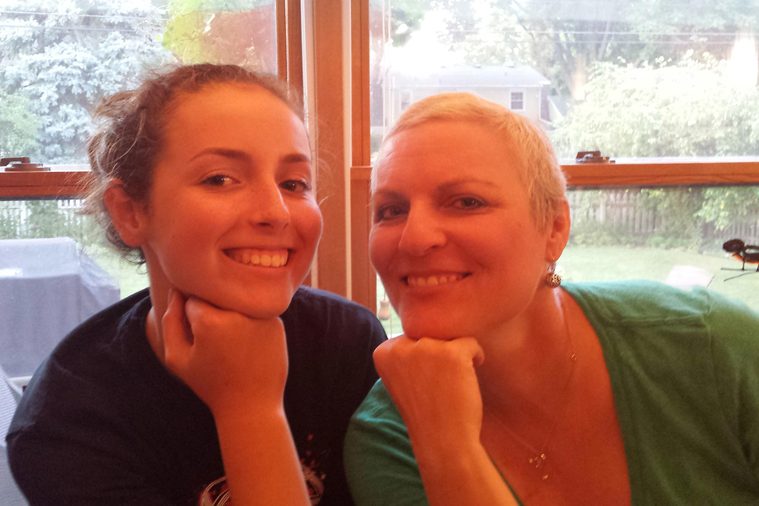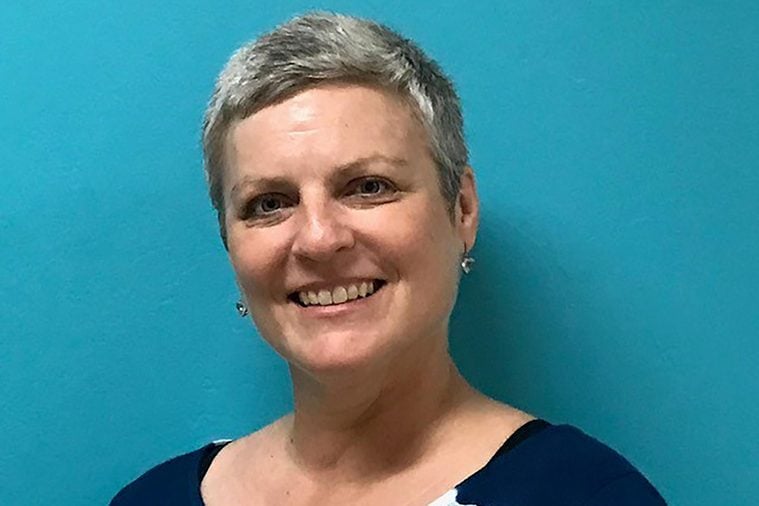Not every woman is great about scheduling those annual breast exams—You know who you are!—but that wasn't true of Gail Zeamer
This Woman’s Mammo Missed a Breast Cancer Due to Her Dense Breast Tissue

Mammograms—A good start, but not the gold standard you think

Dense breast tissue is comprised primarily of connective tissue instead of fat. And herein lies the problem. Like malignancies, connective tissue appears white on mammograms, including those which boast 3D technology. Women with dense breasts often require additional tests, such as ultrasounds, or MRIs, to uncover cancerous tumors. Zeamer’s dense breasts were indicated on her chart, but she was never told. Like most women with this condition, she also wasn’t told that mammograms would often miss tumors in her breasts, but that ultrasounds would not. Here are nine breast cancer symptoms that aren’t lumps.
“My nurse practitioner completely dismissed the whole idea of dense breasts,” says Zeamer. “When I first discovered a lump, she said it was most likely a cyst, and not to worry. So, I didn’t. The first time I got a mammogram after noticing my lump I was asked. ‘Do you see any changes?’ I said yes, but nothing was noted in my file, and I got the see you in a year letter. At appointment after appointment, I kept being told not to worry, but I asked for an ultrasound anyway. I was told I didn’t need it.” A year later, on Zeamer’s third mammogram after feeling the lump, nothing showed up, again—at least not in her breasts. This time, however, her lymph nodes looked suspicious. She was given, finally, a hand-held ultrasound by a radiologist, who found the hidden tumor, which was there all along. “My 3D mammogram, which I paid for out of pocket because I wanted the best care possible, did not catch it. The tumor remained hidden, but years after it should have been removed, metastasis showed.” At this point, Zeamer was diagnosed with Stage 3C cancer.
Advocating for change while waiting for a cure

Realizing that early detection meant little if ultrasounds were not included in the protocol for women with dense breasts, Cappello and her husband pursued legislation that would require doctors to inform women if they have dense breasts—and what that can mean for risk. Zeamer is part of that crusade and continues to advocate heavily, through her Facebook group, the Wisconsin Breast Density Initiative. (Wisconsin now has legislation on the books.) Currently, 38 states and the District of Columbia have passed such laws. Only seven states and the District of Columbia currently require that insurance cover the cost of ultrasounds for women with dense breasts—here’s a map to see if your state is on the list. Even if you live in a state that doesn’t mandate coverage, the advocacy group breast360.org notes that if a physician orders the extra imaging, insurance will usually cover it.
In March of 2019, the federal government passed a law stating that women should be informed about their breast density and its consequences with regard to masking and increased risk. “The dense breast mandate is essential in informing women’s health care decisions that go beyond coverage and accessibility and access issues and addresses the quality of screening mammograms,” explains Richard Reitherman, MD, PhD, medical director of breast imaging at MemorialCare Breast Center at Orange Coast Medical Center in Fountain Valley, California. There’s even more news on this front: The New England Journal of Medicine published research in 2019 indicating that women with extremely dense breast tissue could benefit from supplemental screening with magnetic resonance imaging (MRI).
If you have dense breasts, and your doctor doesn’t think you need an ultrasound or an MRI, think first of your own loved ones and then tell him or her you don’t agree. “My daughters were 14 and 17 and were home on a snow day when I got the call,” she says. “Talk about your whole world shifting on its axis. To have to explain this to your children—it’s the most horrible day of your life. I don’t want any other woman to have that conversation with their child,” she says.
Moving forward
Advocacy is good for the soul, but so is adhering to a healthy lifestyle, and pursuing treatment. Zeamer is taking Tamoxifen, a hormonal treatment for breast cancer, and is spending as much time as possible with her girls, and her husband, Steve.
She has no plans to stop until every state in the country requires doctors to share information about dense breasts, and the truth about mammograms, with their patients. Next, find out the best diet for breast cancer prevention.



















